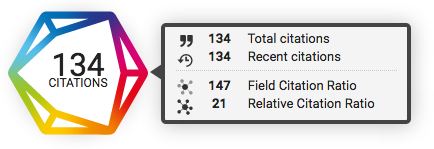There are days when it seems the reporting will never end. Marketers must report on the efficacy of their campaigns. Production departments must report on their performance. Publishers must report regularly to their society partners, university owners, parent corporations, or shareholders.
Funders, management, hiring committees: all of them require researchers to demonstrate the influence and impact of their work. Making citations data openly and immediately available not only provides this, but it can help an author or reader understand where the publication sits within its wider discipline. When it was cited, why, and by which other researchers or articles remains critical to understanding the context of the impact.
Publishers, too, can benefit from showcasing the citations to their publications in such a visible way. Demonstrating the academic impacts of articles can provide an indicator of the value and relevance of journals - and clearly communicates the extent to which the research published there is having an influence in its field.
Identifying emerging trends or knowing in which direction to take the scope of a journal or book series can be tricky - but getting a deeper understanding of which publications are having an impact, and the context of that impact, can be a valuable guide for future special issues, new journal launches, or even finding new authors to approach.
Beyond authors, being able to see who is citing your publications can offer a starting point for recruiting new Editorial Board members, and often provides a useful way to engage with potential new reviewers.
And then, of course, there is reporting. All departments within a publisher need to share metrics about impact and readership with all sorts of people including internal teams, librarians, authors, and owners. Tracking the performance of your articles and books is becoming critical to the everyday workflows of marketing, communications, editorial and sales teams - and the Dimensions badges are a great place to start.
The Dimensions research information platform launched in January 2018. It offers access to information on publications, citations, clinical trials, policy documents, and funded grants. As part of the platform's development, Digital Science have created the Dimensions badges, which will not be unfamiliar to users of Altmetric.
The badges are a dynamic visualisation which can be easily embedded into any article page. They show the citation count of the item from Dimensions, and provide further metrics when hovered over, including:
- Recent citation count
- Field Citation Ratio (or FCR)
- Relative Citation Ratio (or RCR)
As an immediate, visual representation of citations, right next to the article itself, the easy integration of Dimensions badges available to Silverchair customers will help publishers showcase the value of their content.
Find out more and see how easily you can benefit from the badges here.
